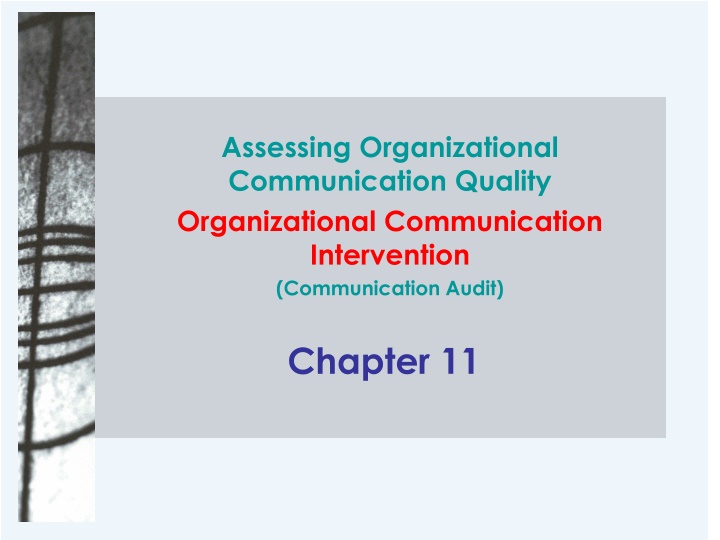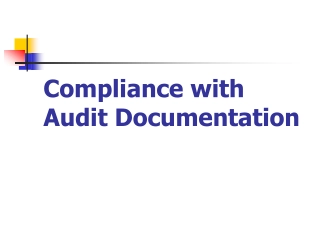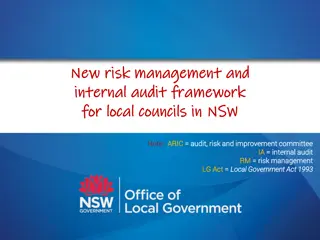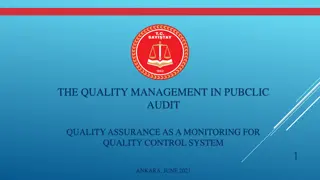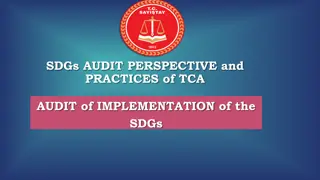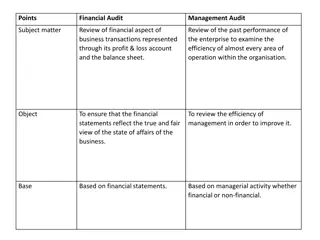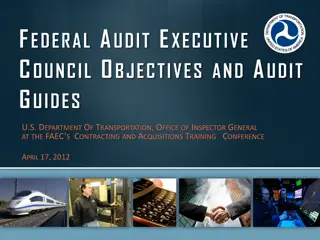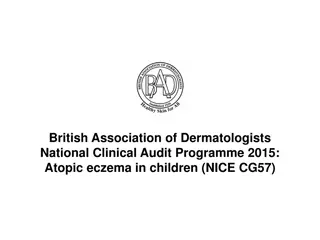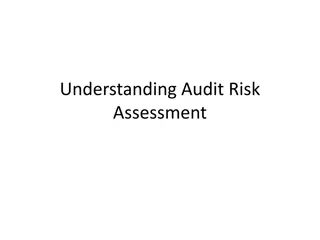Assessing Organizational Communication Quality: Audit Components & Methods
Dive into the process of conducting a communication audit within an organization, examining key components such as information management, external networks, and communication climate. Explore methods like interviews, surveys, focus groups, and observation to improve communication effectiveness.
Download Presentation

Please find below an Image/Link to download the presentation.
The content on the website is provided AS IS for your information and personal use only. It may not be sold, licensed, or shared on other websites without obtaining consent from the author.If you encounter any issues during the download, it is possible that the publisher has removed the file from their server.
You are allowed to download the files provided on this website for personal or commercial use, subject to the condition that they are used lawfully. All files are the property of their respective owners.
The content on the website is provided AS IS for your information and personal use only. It may not be sold, licensed, or shared on other websites without obtaining consent from the author.
E N D
Presentation Transcript
Assessing Organizational Communication Quality Organizational Communication Intervention (Communication Audit) Chapter 11
Preview Main Points I. II. III. Audit Components: What needs to be examined? IV. Methods for conducting Audits V. Reporting Results What is a Communication Audit Audit Qualities
I. What is a Communication Audit An examination of the quality of communication within an organization. Values of conducting comm. Audits: Develop a process for measuring effectiveness of comm. Help organizations develop a strategic plan to improve comm.
II. Audit Qualities The methods used (interviews, questionnaires, etc) should be: Valid: if it measure what is designed to measure Reliable: if every time the method is used gets similar results (if it can be replicated) Although reliability does not determine validity is a precondition for validity
III. Audit Co >?mponents: What needs to be examined? (1) Information Management What dimensions needs to be examined?... Email, job tasks, Communication Networks: - Upward Networks suggestions, feedback - Downward Networks Are there channels that allow management to communicate to subordinates? - Horizontal Networks Communication between employees, supervisor, departments
III. Audit Components: What needs to be examined? (2) - External Networks - Communication with clients institutions - Formal / Informal Network Systems - Information through the grapevine Communication Climate - Is the climate supportive or defensive? Ch. 7 - SCOPE: Ch. 7 Communication Skill Sets: Knowledge, listening, public speaking, team comm.,
IV. Methods for Conducting Audits One-on-one interviews to obtain more in-depth information. Surveys/Questionnaires A questionnaire offers many advantages Focus Groups a set of people who convene to discuss a particular issue. Observation Involves observing and recording information regarding communication activities. Others: Network analysis, Best Comm. Practices
V. Reporting Results The written report should include: A detailed explanation of the findings. A set of specific recommendations that could be implemented by the client. A schedule for implementation and follow-up assessment. An oral presentation may also be needed It requires skill and diplomacy to communicate undesirable information
Preview Main Points I. II. III. Audit Components: What needs to be examined? IV. Methods for conducting Audits V. Reporting Results What is a Communication Audit Audit Qualities
